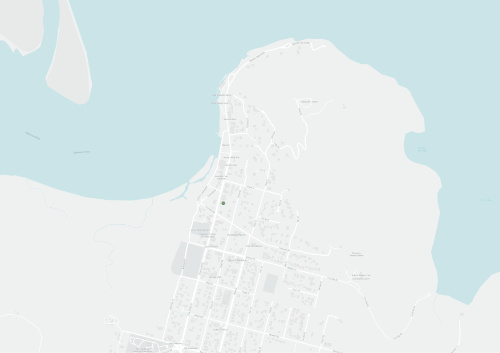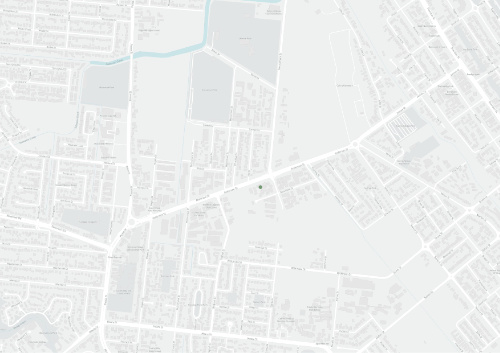Plan Explorer
Filter by:
Region
Topic
Sector
Other
Results
Soil Conservation Act 1986
Current Statutory (law)An Act to consolidate and amend the law relating to the conservation of soil resources and to facilitate the implementation of soil conservation measures by landholders for the mitigation of soil erosion.
Queensland's Agriculture Strategy
Current Government PolicyA 2040 vision to double agricultural production
Strategic Cropping in Cape York
Current InformationalStrategic Cropping in Cape York – what is to be locked away in the draft Strategic Environmental Areas
Western Cape Communities Trust & Western Cape Communities Coordinating Committee strategic plan 2009-2012
Obsolete StrategicThis document was released by the Western Cape Communities Trust (WCCT) and Western Cape Communities Coordinating Committee (WCCCC) as a plan to deliver on 4 key objectives within the mining lease area surrounding Weipa.
South of the Embley communities, heritage and environment management plan
Current OperationalThis community, heritage, and environment management plan was developed by the South of Embley working project group for the area of Rio Tinto Alcan's mining lease between Aurukun and Weipa in mid 2011.
Port of Weipa environmental management plan
Current StrategicThis environmental management plan was released by the North Queensland Bulk Ports Corporation as part of their environmental program with the objective of acting as a reference document for all then-current and potential users of the Weipa port.
Mungumby Community Plan
Current CommunityThis document was released in March of 2012 following a 2007 Federal Court ruling which recognised the Eastern Kuku Yalanji people's of 129,600ha of country between the South Mossman River and just North of Black Mountain near Cooktown.
Wujal Wujal Aboriginal Shire Council planning scheme
Current CommunityThe Wujal Wujal planning scheme was released in 2013 by the Wujal Wujal Aboriginal Shire Council and set out the council's intention for the future of Wujal Wujal over the next 20 years from 2013.
Northern Peninsula Area Council 2010-2020 Land and Environment Management Plan introduction
Current StrategicThis document is the introductory pages for the Northern Peninsula Area Council's 2010-2020 Land and Environment Management Plan released in December 2010.
Draft Cape York Peninsula Natural Resource Management Plan (2005)
Obsolete Government PolicyThe aim of the Plan is to ensure that natural resources are well managed, and protected where required, for the benefit of us all and future generations. The Plan aims as far as possible to be consistent with other regional strategies.
Annan and Endeavour Strategic Plan
Current StrategicThe Annan-Endeavour Catchment Management Group has developed this Strategy in close association with all interested community, government and industry groups.
Cape York Peninsula Heritage Act 2007
Current Statutory (law)An Act to provide for the identification of the significant natural and cultural values of Cape York Peninsula, and cooperative and ecologically sustainable management of Cape York Peninsula.
Coastal Management Plan
Current Government PolicyThe Coastal Management Plan is prepared under the Coastal Protection and Management Act 1995 (Coastal Act) to describe how the coastal zone of Queensland is to be managed.
Cape York Regional Plan
Current Government PolicyPublished by the Department of State Development, Infrastructure and Planning. The plan identifies and interprets the state’s interests in land use planning and development, as described in the State Planning Policy, for the Cape York region.
Kaanju Homelands Wenlock & Pascoe Rivers Cape York Peninsula Indigenous Protected Area Management Plan
Obsolete OperationalPrimarily, this Plan is for Kaanju people living on homelands, but it also serves as a guide for external land and resource management, conservation, service delivery, economic development and community development organisations and agencies, both government and non-government, engaged with Chuul
Laura Ranger Country Plan and Poster
Current OperationalPoster outlining a set of guiding priniciples on which Laura Rangers will operate on their country.
Laura-Normanby Catchment Management Strategy
Current StrategicThe Laura-Normanby Catchment Area covers a vast and relatively undeveloped area with extensive riverine and wetland systems, one of Queensland's largest conservation areas (Lakefield National Park), numerous sacred aboriginal sites, good cattle country and rich agricultural lands.
Mitchell River Watershed Strategic Plan
Current StrategicThe Mitchell River Watershed Strategic Plan 2013-2016 is an update of the Mitchell River Watershed Management Plan created in 2000.
Reef Water Quality Protection Plan 2013
Current Government PolicyReef Plan is a joint commitment of the Australian and Queensland governments. The plan is a collaborative program of coordinated projects and partnerships designed to improve the quality of water in the Great Barrier Reef.
Upper Mitchell Catchment Rehabilitation Plan
Current StrategicTechnical Report on Rehabilitation Needs
Vegetation Management Act 1999
Current Statutory (law)The purpose of this Act is to regulate the clearing of vegetation in a way that:
Eastern Kuku Yalanji Indigenous Protected Area Management Plan Stage 1
Current OperationalCaring for Kuku Nyungkal Country
Our vision for our bubu (land)1 is to
-
Maintain our Nyungkal culture, belief, customs and law/lore;
Recently added
Kaanju Homelands Wenlock & Pascoe Rivers Cape York Peninsula Indigenous Protected Area Management Plan
Obsolete OperationalPrimarily, this Plan is for Kaanju people living on homelands, but it also serves as a guide for external land and resource management, conservation, service delivery, economic development and community development organisations and agencies, both government and non-government, engaged with Chuul
Julery Pastoral Property Pest Management Plan
Obsolete OperationalThe plan represents a workable pest management program which identifies, combats and eradicates declared environmental pest plants and feral animals for Julery Pastoral.
Jim's Joint Property Pest Management Plan
Obsolete OperationalThe plan has been prepared to protect the economy and environment of “Jim’s Joint” from the adverse impacts of weeds and feral animals.
Normanby Catchment Water Quality Management Plan
Current StrategicThe Normanby Catchment Water Quality Management Plan is written in accordance
with the Australian Government’s Framework for Marine and Estuarine Water Quality
Cape York Peninsula Pest Management Strategy
Obsolete StrategicThe Cape York Peninsula Pest Management Strategy (CYPPMS) is a broad over-arching document that establishes a Cape-wide planning framework for integrated pest management by government, community, industry and individuals.
Queensland Pest Animal Strategies - Feral Pigs (Sus scrofa)
Obsolete Government PolicyThe overall vision of the feral pig management strategy is to use best practice
management to minimise the impact of feral pigs on the environment, economy and
health of Queensland.
The strategy is intended to achieve five outcomes:
Strategy for Delivering Water Resource Management in Cape York
Current Government PolicyThis strategy identifies short term and long term actions that will enhance opportunities for future access to water resources for agriculture, tourism and other industries in a responsible way.
Cape York Regional Plan
Current Government PolicyPublished by the Department of State Development, Infrastructure and Planning. The plan identifies and interprets the state’s interests in land use planning and development, as described in the State Planning Policy, for the Cape York region.
Cape York Peninsula Feral Pig Management Plan 2006-2009
Obsolete OperationalThe Cape York Peninsula (CYP) Pest Management Strategy provides a planning framework for coordinated pest management between research bodies, agencies, communities, industries, individuals and the government.
Coastal Management Plan
Current Government PolicyThe Coastal Management Plan is prepared under the Coastal Protection and Management Act 1995 (Coastal Act) to describe how the coastal zone of Queensland is to be managed.

